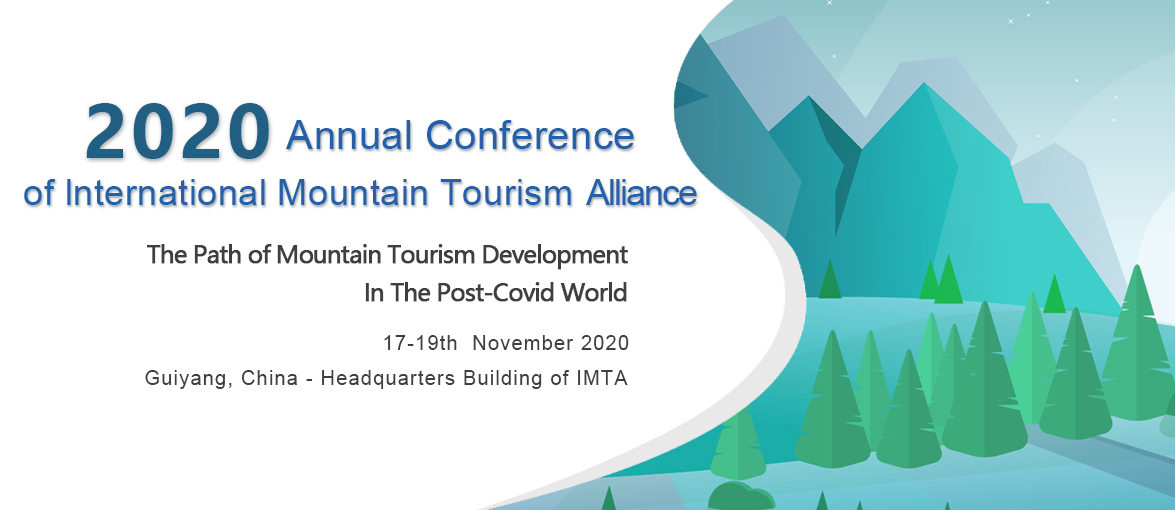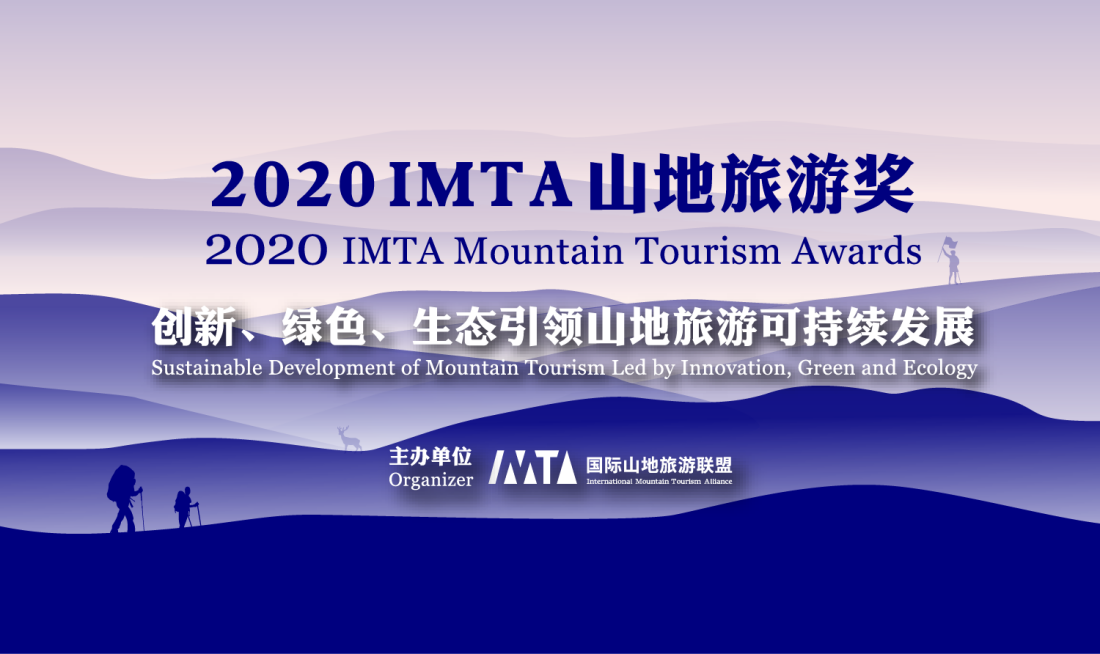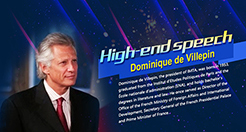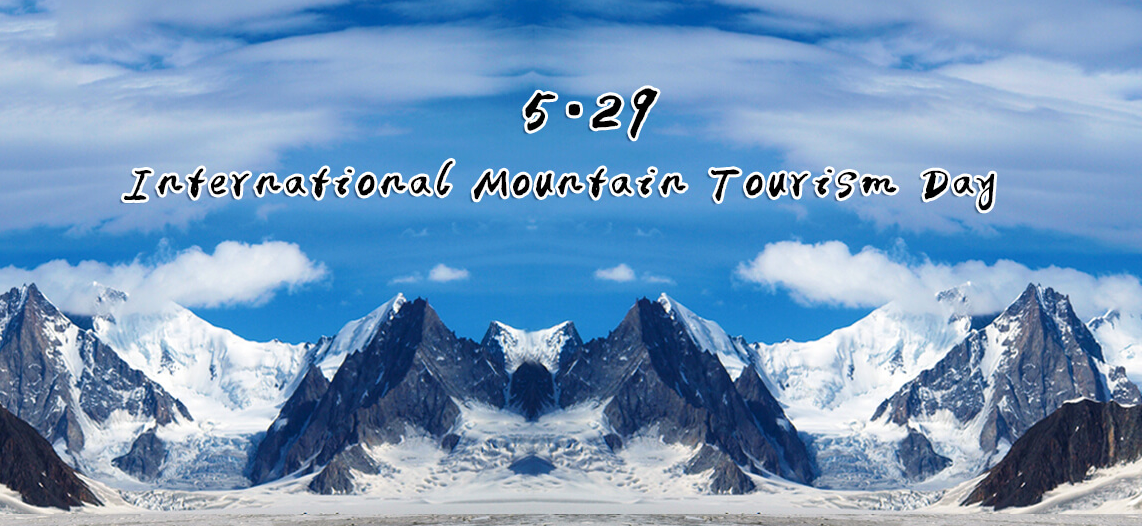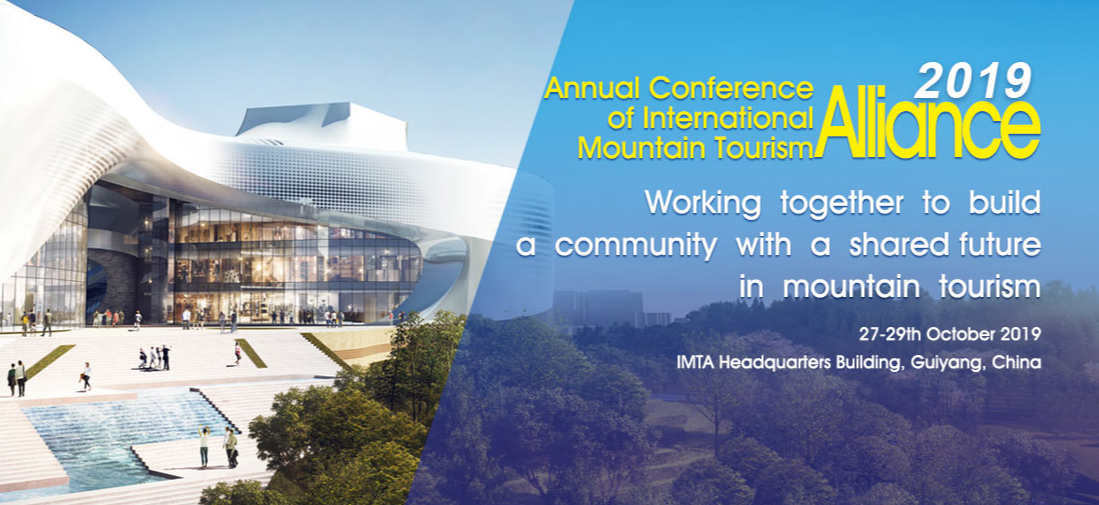Zhang Xinsheng · President of IUCN and Chair of IUCN Council | How should mountain tourism turn crisis into opportunity under the global change?
EDITOR'S NOTE: On May 29 2021, the main activity of the third International Mountain Tourism Day—the World Heritage Famous Mountain (Jinfo Mountain) Summit kicked off in Nanchuan District, Chongqing Municipality, China successfully. Themed with “World Heritage Protection and Green Development of Mountain Tourism”, the Summit got strong support from the World Tourism Organization (UNWTO), the World Intellectual Property Organization (WIPO), the International Union for Conservation of Nature (IUCN), the World Travel & Tourism Council (WTTC), the Pacific Asia Travel Association (PATA), the Global Tourism Economy Forum (GTEF), the Internationale Organisation Für Volkskunst (IOV) and the China Association of National Parks and Scenic Sites. The theme forum presented wonderful contents with high-level opinions, frontier observations and dialogues on trends. The speeches will be released in succession to share with industry colleagues.
Zhang Xinsheng, President of IUCN and Chair of IUCN Council delivered a speech at the summit:
Currently, there is a significant change that has never happened in the world for a hundred years. “It is impossible for us to make a good plan for the present without any long-term strategy. Nor can we handle the current situation without any overall planning.” As mountain tourism is an essential branch of tourism, we should correctly appraise the situation.
Today, we will mainly discuss the following two parts. The first is about the insights, opportunities and challenges brought by the global change and the pandemic to tourism and mountain tourism. The second is turning crisis into opportunity, and achieving transformation and upgrading.
I What the global change and the pandemic bring to tourism and mountain tourism in terms of insights, opportunities and challenges?
First, let’s take an international perspective. There are three major discoveries in the 20th century: quantum mechanics, relativity and DNA structure. In the 21st century, a new round of technological revolutions and industrial changes are bringing disruptive changes. The new generation of digital technologies represented by cloud computing, big data, Internet of Things, artificial intelligence and 5G have changed traditional production methods and management modes, promoted precise matching of supply and demand, stimulated many new industries, new business models and new modes, and these changes have brought unprecedented development opportunities for mountain tourism. Meanwhile, the global economic power contrast has shown a trend of “increasing in the east and decreasing in the west”. The emerging economies and developing countries are increasing their international influence, and global governance discourse is tilting more and more toward developing countries, with China being the most prominent in particular. The global governance system and international order are also undergoing a major change. The G20 and other more widely representative global governance platforms are increasingly far-reaching, peaceful development and win-win cooperation have become a trend, and the concept of a community of human destiny has won broad international consensus. In addition, nature is facing three major crises: the crisis of environmental pollution, the crisis of climate change, the crisis of the decline of the service function of the earth’s ecosystem and the sharp decline in biodiversity. Let’s start with the decline of ecosystem services and the crisis of sharp decline in biodiversity. Seventy-five species are going extinct each day, and three species are going extinct each hour globally. Between 2015 and 2020, the annual deforestation in the world is about 10 million hectares. The above three crises are inescapable problems before us. It makes sense for us to give priority to ecology in mountain tourism. Thirty-five years have passed since humanity proposed sustainable development. On September 25, 2015, the United Nations General Assembly issued the 2030 Agenda for Sustainable Development. It was a development plan 15 years ago, and now humanity must move even further towards sustainable development.
Next, let’s look at domestic changes. First, China has completed its second step of “three steps” to achieve a well-off society in an all-round way. It has lifted 800 million people out of poverty in the meantime, so the demand for tourism is increasing. Second, China’s domestic development strategy has undergone a significant transformation and upgrade - mainly internal circulation, combining internal and external circulation. The 19th CPC National Congress has proposed that the Chinese people not only seek rich spiritual and material products, but also more quality ecological products. This is a sign that domestic tourism is heading toward a peak, with more than 230 million trips made nationwide during the May Day holiday alone (2021). Third, China has fully entered the massification era. There will be changes in education, health, sports and all other aspects. Tourism, especially outdoor tourism, has become a part of our life. Fourth, there is the change of lifestyle, production mode and consumption mode-the shift in value orientation and pursuit. Alexander said: “We need not only have noble feelings to our work, but also our leisure time to live our life to the fullest.” Tourism, especially mountain tourism, will be an ideal choice. Fifth, the aging of the population is becoming increasingly severe - the health regimen requirements for suitable ecological areas. This issue is about mountain tourism, about health and wellness, all about aging. Sixth, with 70% of the population being “sub-healthy”, we all need to stay healthy and take good care of ourselves. Urbanization, fast-paced life, competition and other issues trigger a series of urban diseases and diseases of affluence. The maintenance of health for life is not only for the elderly. We all need health. Seventh, China is rich in mountain tourism resources. Its numerous mountains, account for 33% of its total land area. Famous mountains and rivers dot the country from the west to the east, so it’s a land with rich mountain tourism resources. Influenced by the Himalayan uplift, the average elevation of China’s mountains is higher than that of many countries globally, showing ecological diversity, geological diversity and cultural diversity. In the past, mountainous areas were often associated with poverty, but now they are valuable resources with unlimited prospects. Eighth, sustainable development and ecological civilization. The ecological civilization is a new concept and strategy resulting from the continuous changes in human response to the dilemma of man and nature, development and conservation. It is a social formation resulting from the development of human civilization to a new stage. China’s exploration and practice of ecological civilization have gone beyond a single category of environmental protection and have profoundly demonstrated the direction of human society in the 21st century.
Finally, let’s talk about the epidemic. COVID-19 is not only a public health event, but also a global natural crisis, a health crisis for mankind. It consequently became a global economic crisis, with 4.3 million deaths in this war without smoke. A small microorganism in an ecosystem has given us a great insight. If we destroy nature, we are threatening our health. If we destruct forests and mountains, we are threatening our health as well. In recent decades, 75% of pandemics have resulted from zoonotic diseases. Due to human greed and ignorance, the habitat of wild animals is constantly squeezed and encroached, which dramatically increases the chances of close contact between people and wild animals. Microorganisms such as germs carried by wild animals are more likely to be transmitted to humans, increasing the risk of zoonotic diseases, including SARS in China, MERS virus in the Middle East, bird flu worldwide and Ebola in East Africa. We should learn from these lessons.
Generally, we cannot get around the following primary relationships in the 21st century, i.e., the relationship between man and nature, development and conservation, the relationship between science and technology, man and technology, the relationship between old economies (OECD) and emerging economies, and the relationship between rising powers and defending powers. We face unparalleled challenges and unprecedented changes in a century. The key is turning crisis into opportunity and seizing the opportunity to achieve transformation, upgrading and high-quality development. We no longer catch up but participate and take the lead.
II How can we turn crisis into opportunity, and achieve transformation and upgrading?
First, what are the general guidelines? At the recent Leaders Summit on Climate, General Secretary Xi Jinping proposed: “We need to work together to foster a community of life for man and Nature.” The community of life is the scientific basis of the community of common destiny, so we put special emphasis on the community of life. The UN’s Sustainable Development Agenda also suggests that we can study mountain tourism to set some testable targets that are meaningful for sustainable development. The business guidelines under the general policy should be the integration of mountain tourism and ecotourism and focusing on the development of mountain recreation tourism. We should transform and upgrade mountain tourism to sustainable tourism and ecotourism. Forest bathing and mountain forest recreation adapted to the needs of all people can become one of the flagship and leading products for transformation and upgrading.
Second, we should apply the concepts of sustainable development and ecotourism to the conservation and development of World Heritage sites. In 1980, the UN invited the IUCN to develop the framework of World Conservation Strategy, hence the proposal of “sustainable development” for the first time. In 1983, ecotourism was introduced, with the natural ecological environment as the object of visit and without causing damage to the natural environment. In 1996, in the IUCN Guide to Tourism, Ecotourism and Protected Areas, Ceballos further stated that ecotourism should also involve protecting the ecological environment and bringing socio-economic benefits to the local area. In contrast to ecotourism, sustainable tourism encompasses all sustainable behaviors in the tourism industry, as well as the expectation of sustainability in all forms of tourism. World Heritage sites are the crown of nature reserves, cultural and natural treasures of outstanding universal value, rare to humanity, and irreplaceable. The inspiration of sustainable development and ecotourism for World Heritage sites is to enhance the conservation of biological, geological and cultural diversity, improve the visiting experience and public science education, and benefit localities and communities. The IUCN World Heritage Outlook assessed the heritages from four aspects: status of natural values, threats, conservation and management actions. The IUCN World Heritage Outlook 3 in 2021 evaluated the conservation of 252 natural heritage sites around the world, with a conservation outlook of “good” or “good with some concerns” for 63% of sites, an outlook of “significant concern” for 30% and a “critical” status for 7%. For the South China Karst World Natural Heritage Site, the assessment result in the IUCN World Heritage Outlook 3 is that the values of the site is in good condition and are likely to be maintained in the long term, provided that minor additional conservation measures are put in place to address existing concerns (strengthening management of upstream water pollution and tourism infrastructure development).
Then, let’s move on to the development of mountain forest tourism and mountain health and wellness tourism. China was the first country to put forward the idea of health and wellness, and the ancient concept of “unity of heaven and man” was the germ of the enlightened idea of health and wellness. The Yellow Emperor’s Classic of Internal Medicine mentioned “thus they lived out the full measure of life bestowed upon them by heaven and lived to be one hundred years of age” and “the superior doctor prevents illness”. We all need to have recreation, which gives a lot of inspiration to mountain tourism. The forest has rich and diverse recreational resources. The Nordic style is based on healing, complementary therapy and fitness, combined with outdoor activities including returning to nature and wilderness, such as the German healing forest footpaths. In Japan, “forest bathing” was first introduced in 1982 and has since evolved into “forest therapy”. All biotic and abiotic factors in the forest environment bring recreational and health benefits. Plant volatiles also have various effects on physiology. Phenols can lower sugar and lipids, with antioxidant, anti-aging, anti-radiation, bactericidal, anti-inflammatory, anti-cancer and anti-mutagenic effects. Ethylene can increase cell membrane permeability, and colchicine can be anti-inflammatory and inhibit cell proliferation, etc. In short, we can use the forest’s landscape, air, hydrology, and climate resources to create high-quality recreation products that are particularly useful in preventing and treating subhealth among the urban population.
The signing of the Paris Agreement was epochal. Leaders of over 170 countries gathered at the UN headquarters in New York on April 22, 2016, to pledge to hold global average temperature increase to well below 2°C above pre-industrial levels and pursuing efforts to limit the temperature increase to 1.5°C above pre-industrial levels. As for the decarbonization blueprint, China will aim to hit peak emission before 2030 and for carbon neutrality by 2060. On September 22, 2020, President Xi Jinping announced at the General Debate of the 75th Session of the United Nations General Assembly that “China will scale up its Intended Nationally Determined Contributions by adopting more vigorous policies and measures. We aim to have CO2 emissions peak before 2030 and achieve carbon neutrality before 2060.” To this end, we should make corresponding efforts for mountain tourism in the fields of decarbonization and ecology. I’d like to make the following suggestions: the location of relevant industries in mountain forests at 800-1200 meters; the use of natural ventilation, natural lighting, renewable energy and recycled water; encouraging low carbon travel and low carbon food, etc.
In addition, dissemination, science popularization and capacity building are crucial. China should assume leadership roles in these aspects in the future.
In conclusion, I’d like to say we should be nature-based and human-centered. I believe that human society will overcome evil, greed and foolishness with justice, goodness and wisdom. Guided by Xi Jinping Thought on Socialism with Chinese Characteristics for a New Era, especially Xi Jinping’s Thought on Ecological Civilization, we will build a beautiful China and move closer towards a community of common destiny with the advantages of the “Five-sphere Integrated Plan” and the “Five Leaps”, so that people and nature can live in harmony and achieve sustainable development. “With the ecological prosperity, there will be the rise of civilizations. With the ecological decline, there will be the death of civilizations.” Facing the vast tides globally, those who follow the trend will prosper, while those who go against it will perish. In another 30 years, China will have achieved its two centenary goals. Human society will be more determined to realize that we can have a better vision for all humankind, only by joining hands globally, taking the path of awakening to ecological civilization and finally marching towards a new era of ecological civilization. This will not be a choice but an inevitable course for humanity.



